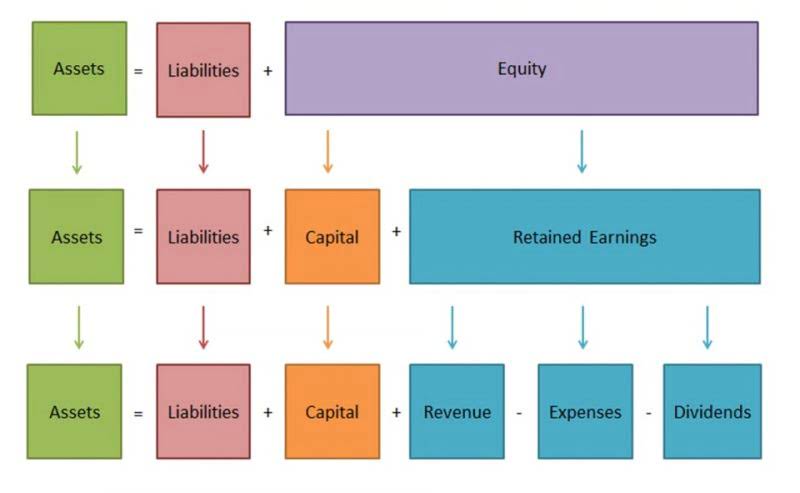
GE has a sales to administrative expense ratio of less than 7.0x vs. Honeywell, which has maintained it above 7.0x during 2014 to 2016 period. Another point to note is that the ratio has been adjusting entries reducing for both the companies. Management can utilize technology to increase productivity and operational efficiency. For example, employees don’t need to spend a lot of paper just on unimportant internal reports.
Setting up SG&A Accounts

Salaries for accounting, information technology, human resources, legal counsel, and consulting fees fall under this category. The depreciation of assets used in a company’s peripheral activities will reduce the company’s non-operating (or other) income. The depreciation of assets used in the manufacturing process are considered to be a product cost and will be allocated or assigned to the goods produced. The allocated depreciation will be included in the inventory cost of the goods manufactured until the goods are sold. When the goods are sold, the cost of goods sold will include the allocated depreciation. It was later revealed that ABC had artificially padded its earnings by sg&a meaning selling the original Jackson Pollock and Willem de Kooning paintings it owned.
Cost of Goods Sold and The Income Statement for Manufacturing Companies
General & Administrative expenses, often the less glamorous components of business operations, are nevertheless the backbone of a company’s daily functions. Think along the lines of salaries for office management, rent for the office space, all the way through to the office snacks. These are the costs not directly tied to the sale of a product or service, but they ensure your business can operate seamlessly. Operating expenses include the cost of goods sold (COGS) and selling, general and administrative (SG&A) expenses. Operating expenses are costs a company incurs in its regular business activities, while non-operating expenses are costs unrelated to the core operations. Selling, General, and Administrative (SG&A) expenses reflect the overhead costs a company incurs in its daily business operations.
#2 – General & Administrative Expenses

The key is to take a hard look at these expenses now and again to figure out where you can trim fat without cutting into muscle. After all, you need to keep growing, but you can’t do that without keeping the lights on. SG&A expenses are considered period costs, meaning they are expensed in the period incurred rather than capitalized or assigned to products. This treatment aligns with generally accepted accounting principles (GAAP) and provides transparency in financial reporting.
- Selling, General, and Administrative Expenses (SG&A) represent the costs incurred by companies for managing their business operations, excluding the costs directly related to producing goods or services.
- For startups or high-growth firms, +30–50% is possible due to heavy investment in sales and marketing.
- Most of the three are fixed costs, and they are unrelated to production levels.
- This guide is here to help you use these costs to make your business, big or small, more successful.
By having a clear understanding of their selling and administrative expenses, companies can improve their profitability and remain competitive in their industry. The budget helps managers estimate the total costs of selling and general administration activities, which is critical in determining the profitability of the company. Selling, General, and Administrative (SG&A) expenses are a critical component of a company’s income statement, encapsulating a wide array of costs integral to maintaining and operating the business. Consulting fees, payroll, and payroll taxes are often substantial components of SG&A, representing the cost of essential support and personnel needed to carry out business operations.
- While SG&A includes the expenses related to running the business, such as sales salaries and office rent, COGS captures all the direct costs involved in making a product or delivering a service.
- Post a job on UpCounsel to speak with a business lawyer in your state to help with any legal or compliance concerns related to managing your SG&A expenses.
- Again, we can see that SG&A expenses are clearly laid out and more details will likely be available in the footnotes.
- You’d be surprised at how often you can renegotiate terms or find alternative providers who offer better deals.
- Meanwhile, management salaries reward those who steer the ship, and office supplies support the day-to-day tasks that underpin your business activities.
- While essential for business operations, these expenses are frequently scrutinized during cost-reduction initiatives as they directly impact a company’s operational efficiency and bottom line.
How to Report SG&A Expenses
COGS differs from SG&A in that it includes the expenses necessary for product manufacturing, such as labor, materials, etc. Before penalizing a company’s stock price because of high SG&A, analysts look at the expenses over time, such as year over year. Analysts also compare a company’s expense relative to sales over time and against a peer group of companies. A company whose SG&A is out of line with its competitors would most likely see a decline in its stock price as investors seek companies with better operating efficiency metrics. In short, direct costs are directly related to the product being sold, while indirect costs are what you spend money on to earn sales.
Services
These expenses are added to direct expenses for making goods or producing services such as materials and labor costs. SG&A expenses comprise payroll costs, such as salaries, commissions and travel, and advertising costs. Operating costs (OPEX) are expenses companies incur during normal operations. Operating expenses include all of the expenses that aren’t covered under cost of goods sold, such as rent, equipment, and marketing. The selling and administrative expense budget is comprised of the budgets of all non-manufacturing departments, such as the sales, marketing, accounting, engineering, and facilities departments. In aggregate, this budget can rival the size of the production budget, and so is worthy of considerable attention.
Related AccountingTools Courses
Let’s unpack this acronym to better understand what falls under each category. ‘Selling expenses’ relate directly to the sales process—it’s all about marketing, sales commissions, and the resources needed to close a deal, like sales-related travel costs. ‘General expenses’ might encompass rent, utilities, office Bookkeeping for Startups supplies—essentially, they cover the day-to-day running of the business, including necessary website maintenance. Think of the behind-the-scenes action—management salaries, but most importantly, the crucial accounting expenses, and legal fees.

For example, Microsoft separates sales and marketing from general and administrative, whereas Roper Technologies lumps them together. You can break the sales category down further into direct and indirect expenses. Direct expenses are those generated during the actual sale of a product and service. Indirect expenses are the costs that are generated throughout the entire manufacturing process.